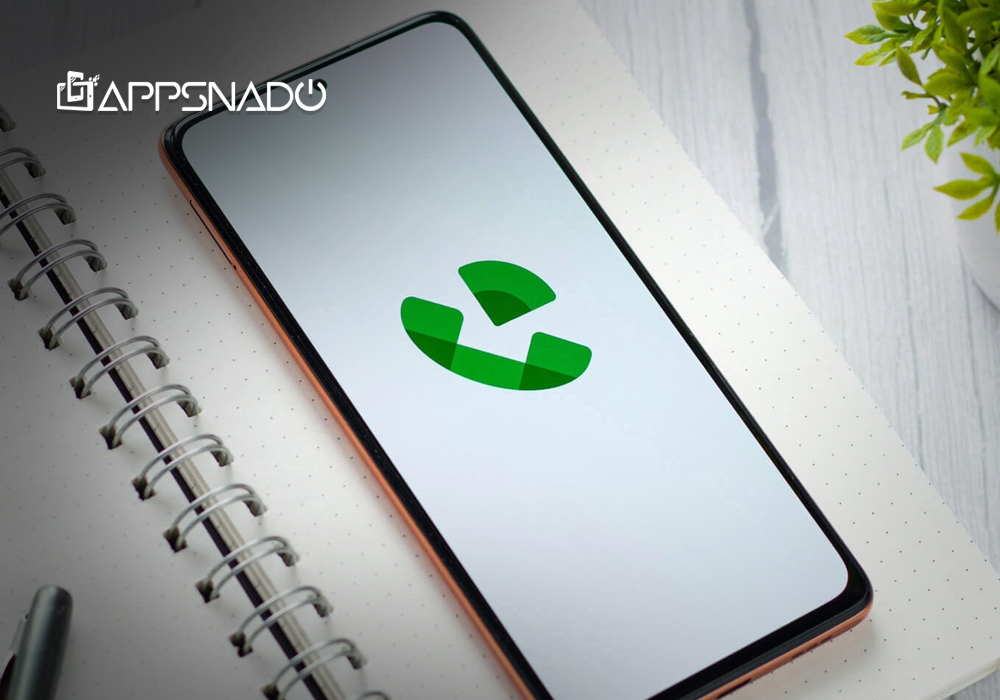Introduction
Established or small, every sort of business needs an app for development and to stay ahead of the competition in this tech-driven era, but as easy as it sounds, mobile app development is not the whole success depends on choosing the right platform for your mobile app, whether it’s iOS or Android or even a combo of both. In this blog, we’ll be discussing the key differences and specifications so that you can make informed decisions while choosing a mobile app development platform. Looking for a reliable mobile app development company is very important for the creation of robust applications. This is the first decision to make with precision. Let’s get insights on the different types of mobile app development platforms.
What Is The Best Mobile App Development Platform?
Your final decision to choose the platform will have an impact on the project budget, schedule, quantity of potential audience members, and the probability of making and being successful with your idea. Multiple factors may influence your decisions. Amongst them are the necessary features and functions, financial targets, target market, deadlines, and budget. The selection of an app should be made entirely based on the needs of your app and the goals you have in mind.
Mobile App Development Platform
To help you make an informed decision, you will first go through the differences between iOS and Android development platforms. Here we will be discussing the major differences between them:
iOS vs Android app development
The choice between developing an Android, an iOS, or both apps primarily depends on your audience. You may know that Android is the most commonly used device type worldwide. In fact, according to Statista, smartphones running Android hold 87% of the global market share, whereas the market share of smartphones running on iOS holds only 13%
Factors To Consider When Choosing a Mobile App Development Platform
- Resources and expenses required to get an app developed
While choosing the best platform for your app, you should consider several important factors, including the cost and availability of each forum. To create a business- and revenue-focused app, all mobile app development companies must invest money, time, skills, and other resources and hire the right people. For the project to be completed successfully, this must also be handled with consideration. Budgets must be set aside for everything from app analysis to development, design, testing, deployment, launch, and marketing. Additionally, the app store fee requires an excellent platform selection. Most paid apps on the market today are failing due to platform incompatibility. Additionally, paid apps are more popular on the Apple Store than the Google Play Store, but free apps function well on Android platforms.
You usually need a Mac to develop iOS apps and use Swift or Objective-C. On the other hand, Android development is more adaptable and can be done on several platforms, such as Linux and Windows. To make a good choice, understand and analyze your development team’s capabilities and financial limitations. Our experience has demonstrated that developing for iOS is not always less expensive than developing for Android, despite what some internet sources may claim. Rather than the operating system or programming language, an app’s features and design ultimately determine how much it will cost to develop. Multiply the estimated development time by your team’s hourly rate to get an accurate estimation of the development cost. This method offers a reasonable cost estimate customized to your project’s particular needs.
- Target Your Located Audience
The initial step in platform selection involves research about the target audience. Various types of demographics are drawn to multiple platforms. IOS caters to a user base on the wealthier side willing to invest in applications, whereas Android, with a broader market share, exhibits greater diversity among its users. Understanding and learning about your audience’s choice of any platform (i.e., iOS or Android). This may assist you in making a better decision. While Android dominates Central and South America, India, Africa, China, the Middle East, Russia, Eastern Europe, and some other countries, iOS is more popular in the United States, Canada, Australia, Japan, and Western Europe. So, first of all, consider your key geographical target markets while choosing. Location-based research helps you create customizable apps that can be used to boost your business and enhance your brand’s image. Choose the platform that has the appropriate range for customers.
- Functionality Of The Apps
Note the features and goals of your application. Certain apps might need specific hardware or features that are accessible only on those platforms. For example, if you have integrated augmented reality features into your app, give iOS development top priority because Apple devices frequently have more powerful AR features. Developing your strategy according to the strengths of each platform will guarantee the best possible performance and functionality that meet the needs of your application. Using the best mobile app development tools can ensure the success of your application. The functionality of an app depends on the complex development process, and this results in enhancing the customer experience. But to do that, you must hire an exceptional UI designer to increase the functionality of an app.
- Revenue Generation
Developers often utilize different tactics to boost in-app revenue for their apps on multiple platforms, depending on the users they are attempting to reach. Unlike Android users, iOS users are known to be smart when it comes to investing money and are usually more willing to spend money on apps. Android phone users can have less functionality than Apple users, per a market study conducted by Wolfgang Digital. The app store mainly focuses on app purchases. If we compare both of the platform users, we can see clearly that an Android user can have more limits to tolerate the lags and the app’s functionality than Apple users, who get irritated even with the slightest error. If we keep these things in mind, it can be recommended that you use the following model of monetization in your app development.
- Android Users: It’s recommended to purchase the features that are shown in the application to get limitless access to your desired functionality.
- iOS Users: Consider selling the app, implementing premium in-app purchases, or offering purchases that remove ads to cater to the user base’s generous spending habits.
-
Development Time
The required period for an app to develop is also different on different platforms. Android users can experience more time in their app’s development, which may require more time because to launch it, it has to be tested several times. Whereas IOS has limitations and variations, the process of development is streamlined. App development takes different amounts of time on different platforms; Android may take longer. The difference results from the need for extensive testing across multiple device models and operating system versions, which adds to the level of difficulty in the development process. Using AI tools like chatbot poe can help you create an intelligent and interactive chatbot for your apps.
The Android ecosystem necessitates thorough testing to guarantee optimal performance across a range of configurations due to its diverse range of devices and software versions. On the other hand, because of its relatively small number of device variations, iOS development is frequently more efficient. The testing stage is usually easier with a smaller selection of devices and more identical software. Although the exact schedule depends on the complexity of the project and particular needs, understanding these platform-specific variations is important for organizing and carrying out effective app development tactics.
-
Maintenance and Updates
Think about doing the updates and maintenance required by an application. It will be necessary for you to stay up-to-date with variations in device models, operating systems, and user demands. Consider the time and money required to keep your app updated on the platform of your choice. In app development, taking updates and maintenance into consideration is important. This requires constant awareness of products in operating systems, device models, and user expectations. Keeping up with these variables is necessary for maintaining the app’s effectiveness and relevance. The platform of choice greatly impacts how much money and time are needed for regular updates. Android may require more resources because of its wide range of device models and the need to be compatible with each of them and all the operating system versions. On the other hand, iOS frequently features a more efficient update procedure due to its more uniform device system. To ensure user satisfaction, security, and overall success in the competitive app market, it is critical to find a balance between the time and money costs associated with maintaining the applications.
-
Cross-Platform Development
Using cross-platform development tools like Xamarin, React Native, or Flutter offers a productive way to target iOS and Android platforms without creating separate apps for each forum. The development process can be streamlined using these tools, which allow code to be written only once and used easily across several platforms. Because of its design based on widgets, Flutter offers a consistent user experience across iOS and Android. React Native achieves native-like performance on both platforms by utilizing a single codebase. Cross-platform development with the C# programming language is made easier with Xamarin. Adopting these technologies guarantees consistency in the user experience across various devices while saving time and effort. This strategy improves development efficiency, lowers costs, and reduces the time-to-market on both major mobile platforms for applications looking to reach a large audience.
-
Analyze the platform for Future Growth
Nowadays, every publisher or developer of mobile apps releases their product with the expectation that it will produce remarkable outcomes soon. There is a chance of more downloads if you select the appropriate platform. Additionally, additional updates are required if you first receive good downloads. When the app is first being developed, it should only be constructed to make it easily compatible with the innovative approach.
-
Mobility Partner
You have to choose your mobility partner carefully if you want to create a revenue-centric business. There are many mobile app development companies out there as a result of the rise in demand for mobile apps. However, you have to choose your mobility partner carefully. Delivering user- and business-centric solutions is of utmost importance to a top supplier of mobile solutions and services.
Check Out These:
- Why is a Quality Assurance Tester Needed on a Software Development Team?
- How to Build a Successful Augmented Reality App?
Evaluate The Best Platform To Develop Mobile Apps
Pros and Cons of iOS app development
Benefits of iOS app development
- Swift and cost-effective
- Greater encryption and safety
Disadvantages of iOS Development
- Prefabricated solutions
- Best monetization model: paid apps, in-app purchases
- Limited customization
Pros and Cons of Android app development
Pros of Android App Development:
- Android takes over the market
- Adaptability of platform
Cons of Android App Development:
- Negative user experiences because of the large user base
- Lesser Updates
- Very Expensive
Native App Development
Another important decision is selecting the type of app that offers the best chance of success. Native applications are developed using a language specific to the platform they are designed for; this ensures the best possible performance on particular devices. This means that an app crafted for iOS, utilizing Swift or Objective-C, won’t function on any Android device, and vice versa. Additionally, native apps follow platform guidelines, integrating effortlessly with the respective systems. Consequently, an iOS app won’t be accessible on the Play Store, and an Android app won’t be available on the Apple App Store. While native development ensures an optimized user experience and access to platform-specific features, it also necessitates separate coding for each platform, potentially increasing development time and resources.
Let’s look at some native application details
The capacity to fully utilize the device’s features, including the camera, contact list, GPS, Bluetooth, Wi-Fi, and more, is the primary advantage of native apps. Because there is no need for conversion or bridging, the programming language “talks” directly to the device, making it extremely responsive.
- Language: iOS utilizes the C language, and Android uses Java or Kotlin
- Availability: Mostly on the App Store.
- Cross-Platform Functionality: It’s available on the platform on which it’s created
Cross-platform or Hybrid app development
Developing a hybrid application that can run on multiple platforms is known as cross-platform building. Flutter in-app purchases are an amazing tool that can help you with monetization. This maximizes the application’s reach by focusing on the iOS and Android platforms. Mobile multi-platform development is becoming more popular. This growth is happening extremely quickly; the question arises: why? Why is the change so quick? Developers can produce apps that function across several operating systems with the help of cross-platform solutions. They also provide tools to assist in code reuse and boost developer productivity. By doing this, you can save money by not having to pay twice for developing the app, making changes, repairing errors, conducting tests, or updating it.
Progressive Web App Development
One of the most recommended applications for mobile phones that can create the best web applications is progressive web apps. These programmers are not distributed through app stores; instead, they use browsers like Google Chrome, which can be found at a specific website address, to display their user interface. Because users do not need to download the apps on their phones, the device’s memory capacity is unaffected. Using communication tools like Unifi talk phones can also help with effective teamwork. A progressive web application (PWA) can function independently and load pages quickly, even when connectivity is poor. Additionally, it has the benefit of continuous updates since it launches automatically with the updates and the most recent version.
Advantages And Disadvantages Of A Web App?
Advantages or Pros
- Works on a variety of devices
- The store manager cannot update and install the application.
- They can provide us with services that are not available in the app stores.
- Provides the accessibility of the same user interface on all gadgets.
- These apps do not need to be downloaded to work. That is, it can work without being downloaded.
Disadvantages or Cons
- If the web apps are compared to the native applications, they may be slow or consume more energy.
- The accessibility is hard and causes some troubles; these could be location-based or functional limitations.
- Unavailability of the features when the device is offline, i.e., no internet
- There is no store to get the apps from, which makes them difficult to download.
Conclusion
Every kind of app development has its advantages in certain situations. Your target market, financial limitations, schedule, and business objectives will influence your decisions. Choosing the correct platform for mobile app development is an important decision that can significantly impact your app’s success. Experts can help personalize the things that you like. It can be anything, say “How to get Roblox voice chat without ID,” or anything that could be any feature that you would like to add in your app creation process, which makes hiring more important as the whole success depends on your decision. Consider factors like your target audience, app functionality, development resources, market share, revenue potential, development time, app store policies, and long-term maintenance. While there is no answer, a detailed analysis of these factors will help you make a better decision and set your app on the path to success.
Check Out These:







